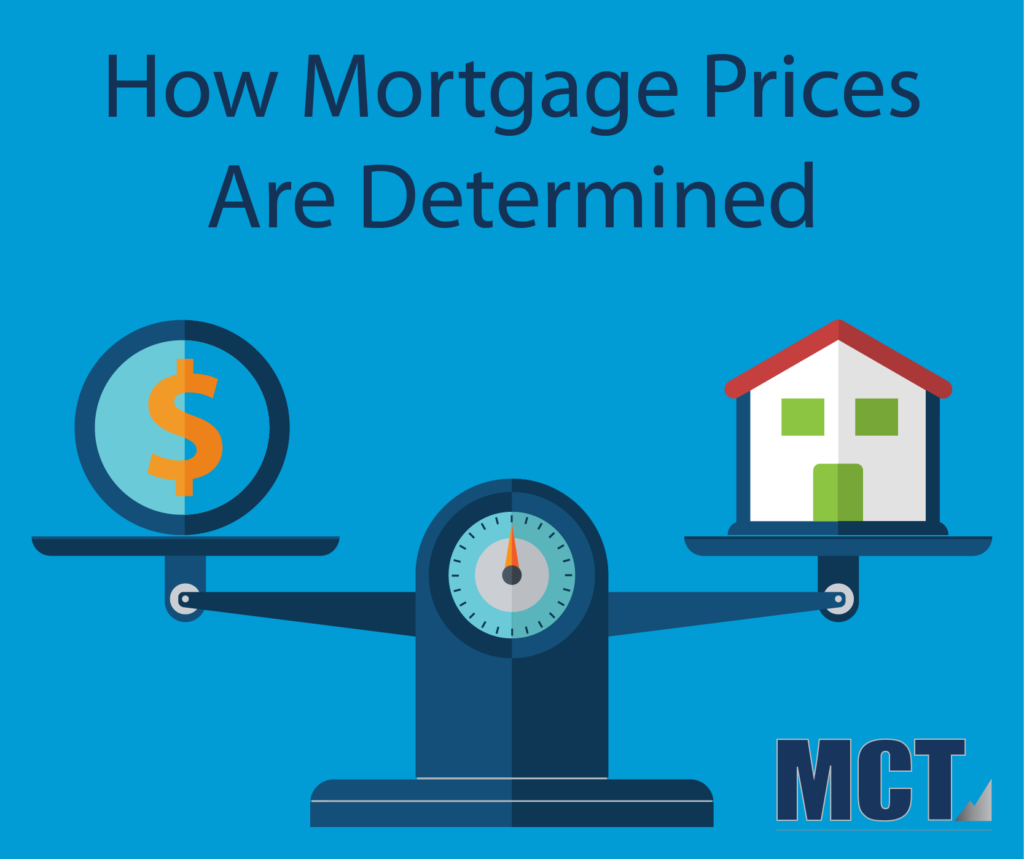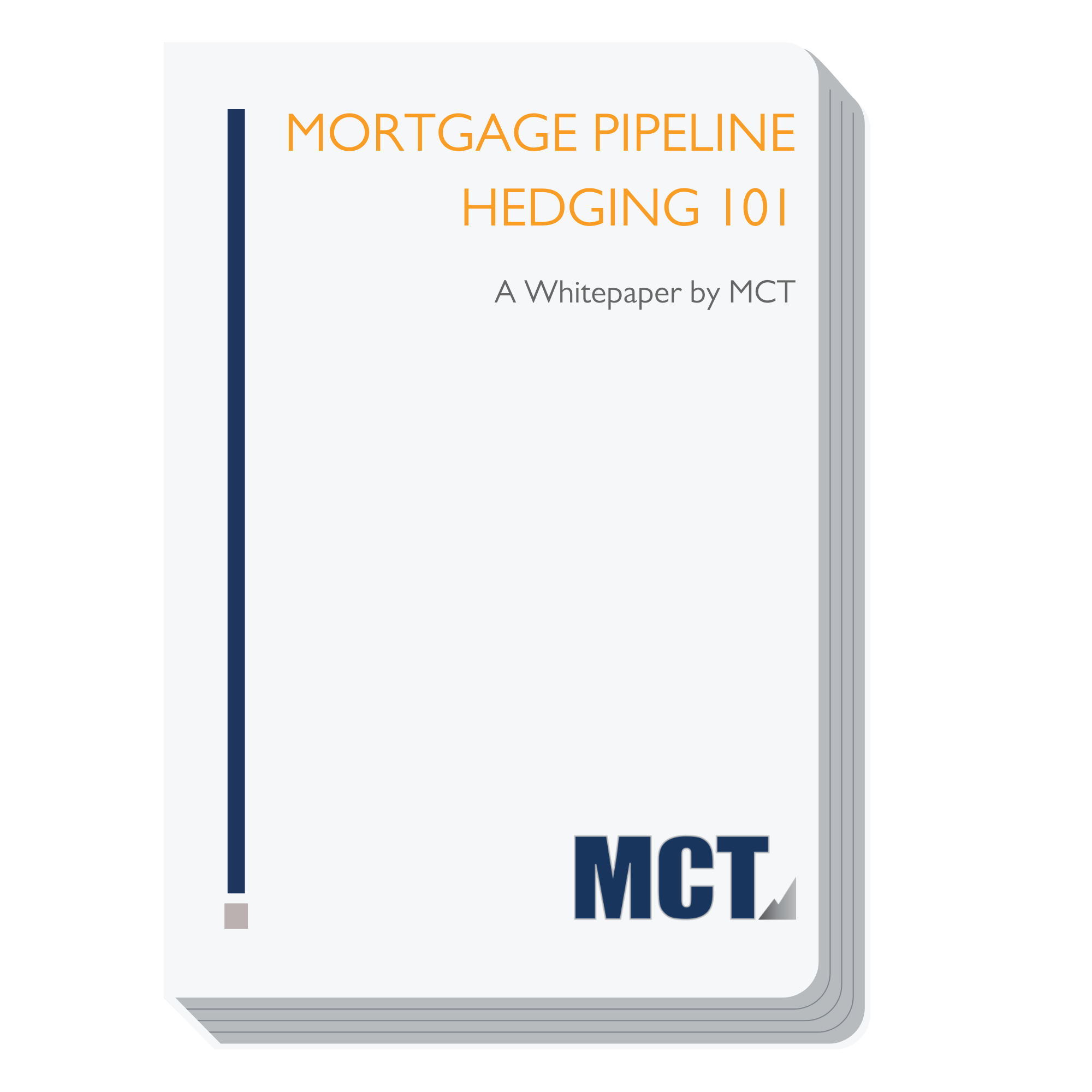
Mortgage prices in the secondary market are determined by a myriad of fluctuating factors, some of which are within the purview of a mortgage lenders discretion and some of which are not.
As a member of the capital markets staff, you might be asked by a potential customer, “How is my rate calculated? How are mortgages priced? And why do some lenders offer lower rates than others?”
In this article, we will provide a detailed explanation for how mortgage prices are determined, why the capital markets staff’s decisions are important in mortgage pricing, and why your rate sheet is not showing the same MBS prices as a screen on your competitor.
This piece will discuss all the contributing factors that influence a mortgage lender’s pricing decisions.
Table of Contents
- How Mortgage Lenders Influence Mortgage Prices
- Other Factors Affecting Mortgage Pricing
- Summary: Factors Affecting Mortgage Pricing for Lenders
How Mortgage Lenders Influence Mortgage Prices
Mortgage rates vary from lender to lender for a variety of reasons. First, we’ll discuss the factors contributing to the mortgage pricing decisions that are made by each individual lender.
Lenders have different appetites for risk, different overhead costs, different products, different servicing strategies, different fees, and different excess servicing multiples.
As a result, mortgage rates or prices are determined by a complex interaction of the following variables.
- market levels
- risk-based analysis
- securitization and credit enhancement costs
- servicing valuations
- capital considerations
At the end of the day, it’s on the lender to determine its mortgage prices to remain competitive. But, above all, the primary objective of a lender is to make a profit on each loan so they can ensure future profitability.
One of the most important factors that influence a lender’s decision on mortgage loan pricing is the risk associated with a loan. Different loan characteristics have different costs and rates associated with them.
A lender could, for example, choose loans that are less risky, less likely to refinance, and less difficult to bundle in an MBS. It’s easier to get a lower rate for these loan characteristics because there is less risk involved. The opposite is true.
It is much easier for a borrower to obtain a good rate on a low LTV, single-family residence with a high FICO score because those characteristics are much less risky to investors than cash-out refinances, adjustable-rate mortgages, as well as loans on manufactured homes, condominiums, second homes, and investment properties.
A further consideration of lenders is that the secondary market may not like the bonds backed by mortgages funded by a lender whose loans refinance quickly. So, it is in the interest of the lender to fund loans that exhibit good performance in relation to its peers.
In the next section, we will discuss how economic growth or decline can influence mortgage prices.
How Economic Growth Influences Mortgage Rates
Mortgage rates, and rates in general, tend to rise when the outlook is for increased economic growth, higher inflation, and a low unemployment rate as the demand for capital increases.
The reverse is also true, as rates will tend to fall when the economy is slowing down, inflation is falling and the unemployment rate is rising as the demand for capital slows.
Mortgage Rates During an Upswing Economy
When the economy is on an upswing and inflation is high, investors demand higher yields on all fixed income securities, including securities backed by mortgages (MBS), forcing lenders to raise mortgage rates. This is because, in a growing economy, the money people borrow now will be worth less than when they pay it back in the future.
High rates mean MBS with higher monthly payments but a shorter duration. Investors are buying MBS to receive monthly principal and interest payments since it is a fixed-income bond, which also means the price drops as rates increase. The stream of payments is calculated for an assumed duration of time since consumers have the option to prepay, or refinance, a mortgage.
Duration calculations determine the sensitivity to interest rate changes by estimating the number of years until an investor receives the present value of all income from a certain MBS. This includes interest and principle. An instructor would explain it to a finance class as the fair value calculation by a discounted cash flow method to measure the average maturity of the bond’s promised cash flow.
Ready to dive deeper? Download our latest whitepaper!

Mortgage Rates During a Faltering Economy
When the worldwide, or U.S., economy starts to falter, or inflation falls, interest rates tend to drop for consumers. In the secondary markets, low rates mean investors can purchase MBS with a longer duration but lower monthly payments. It is a seesaw act.
The more MBS that investors buy, the higher the prices on those securities, so the lower the rates drop since lenders don’t need to offer as high of a rate on the rate sheet to hit a target margin. Lower rates mean more and faster prepayments. Lower rates also mean that cash flows will terminate from higher-yielding MBS due to refinances.
That principal, returned by borrowers refinancing, is then invested at lower rates to generate new income, which means investors miss out on the higher yields and larger cash flow streams than at other points in the economic cycle.
Other Factors Affecting Mortgage Pricing
Aside from movements in the economy, there are several other factors outside of a lender’s control that influence their ability to price their mortgage loans.
The heart of the challenge facing a lender is managing the difference between the price investors will pay to buy a specific mortgage on the secondary market and adjusting for the many variables that affect margin management within a lending company. The lender must take into account not just the investors’ price, but also the costs of origination, competitive positioning, capacity constraints, profit margin, and the borrower’s price.
Below, we will briefly touch upon the most influential of these variables.
The Mortgage-Backed Securities (MBS) Market
The MBS market is another aspect of the secondary mortgage market that impacts the prices of mortgage loans.
The MBS market is highly liquid with prices determined by what buyers are willing to pay for securities. And whether these securities are backed by 30-year, 15-year, non-QM, ARM, or loans below a particular loan balance, MBS prices rise and fall as demand rises and falls.
Federal Reserve Announcements & World News
Loan officers should understand that mortgage rates and Fed rates move independently of each other, but usually in the same direction as a result of global and domestic events.
Contrary to popular belief, the Federal Reserve doesn’t set mortgage rates. The Fed raises and cuts short-term interest rates in reaction to broad movements in the economy, and in fact only directly controls the Federal Funds Rate and the Discount Rate.
But mortgage rates rise and fall according to those same global and domestic economic forces that drive the Fed’s decision making, like retail sales, home sales, housing starts, Treasury auction results, news, and manufacturing outputs.
Read our blogs on the topic to learn more about How the Federal Reserve Affects Mortgage Interest Rates and How the News Impacts the Secondary Market.
Prepayment Speeds, Duration, and Loan-to-Value
Mortgage pricing in both the primary and secondary markets is intricately related to prepayment speeds or how fast borrowers refinance.
When interest rates inevitably rise, borrowers tend not to refinance. At this time, investors don’t want to be stuck with too many loans with low interest rates in a high interest rate environment due to below-market returns, so they seek to purchase mortgages with current coupons/higher rates. Then, mortgage lenders raise their rates for borrowers to create new pools for investors to buy. This is a great example of how secondary market demand directly impacts the primary mortgage market.
Loans with lower interest rates have longer durations since they are less likely to refinance, even with a drop in rates. Other factors, like loan size and loan-to-value (LTV), also play into calculations of mortgage pricing.
When a mortgage is paid off early, the expected stream of principal and interest payments ends and a lump sum (which lacks any future interest) is received by the investor who bought the loan. Predicting the effects of prepayments on the value of MBS requires advanced mathematical models, but discounting the expected value of future cash flows from MBS is how mortgage rates are determined.
The Secondary Mortgage Market
With all the increased regulation and scrutiny since the Great Recession of 2008, this is arguably the most crucial part of running a viable mortgage bank.
It is imperative to employ a compliance department to have clear policies and procedures (e.g. underwriting policy, closing policy, etc.), as well as monitor your standing with the Home Mortgage Disclosure Act, Fair Lending Policies, Anti Money Laundering, and Dodd-Frank Act.
Your compliance officer should be responsible for communicating and enforcing the rules. Warehouse lenders and correspondents view this as a critical part of your business.
Summary: Factors Affecting Mortgage Pricing for Lenders
As you can tell, mortgage loan pricing is a multi-dimensional process that takes place in every stage of the mortgage lending cycle. From this article, we can surmise that the following factors are the largest players in influencing mortgage pricing:
- Lender appetite – Choices about products, risks, and margin management
- Economic Growth or Decline – All market movements up or down
- Global and Domestic Forces – News and announcements from the federal reserve because of national or international events
- Secondary Mortgage Market – Prepayment speeds and the MBS market
When lenders understand the influencers of mortgage pricing, they are far better equipped to anticipate and navigate changes in pricing for the benefit of their business.
Related Articles:


